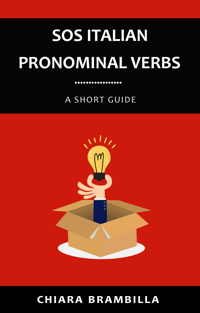
Many people who are learning Italian often use perché even when they should use siccome. This generally happens because in their native language perché and because in a certain position are interchangeable but unfortunately in Italian they are not. So, what is the difference between perché and siccome in modern Italian? Let’s learn it!
Siccome
– Siccome is a synonym of other Italian expressions such as dal momento che, dato che, poiché visto che. It is used to introduce a cause only when the cause precedes the effect. The verb that follows siccome is always in the indicative.
Examples:
Siccome non mi sento bene, oggi non vado in palestra
Because/since I’m not feeling well, today I don’t go to the gym
Siccome fa caldo, oggi andiamo in piscina
Because/since its’ hot, today we go to the pool
Siccome mi hanno rubato il motorino, oggi devo andare a piedi al lavoro
Because/since someone stole my motorbike, I’ve to walk to work today
Perché
– Perché is used to introduce a cause as well. However, when perché has this function, the cause must always come after the effect. Compare the examples we’ve just used above with their version with perché below.
Examples:
Oggi non vado in palestra, perché non mi sento bene
Today I don’t go to the gym, because I’m not feeling well
Oggi andiamo in piscina perché fa caldo
Today we go to the pool because it’s hot
Oggi devo andare a piedi al lavoro perché mi hanno rubato il motorino
I’ve to walk to work today because someone stole my motorbike
So, this is the main difference between perché and siccome, as you can see it’s not difficult to understand but if your native language doesn’t have this difference, you might need to do some practice to get this right.
– Perché is used in questions to ask about the reasons for something and in answers to explain those reasons.
Examples:
Perché non sei venuto ieri?
Why didn’t you come yesterday?
Perché non mi sentivo bene
Because wasn’t feeling well
Finally, perché can also be used as a synonym of affinché in subordinate final clauses. In this case, it explains the purpose of what is said in the main clause and it is always followed by the subjunctive.
Examples:
L’ho chiamato perché mi aiutasse con il trasloco
I called him to help me with the move
Gli ho detto tutte quelle cose perché potesse cambiare il suo atteggiamento
I told him all those things so he could change his attitude
I hope this article helped you understand the difference between siccome and perché. If so, don’t forget to share it!
Credits
Original image by RobinHiggins




 Authentic Italian crafts – Murano glass
Authentic Italian crafts – Murano glass


Very helpful and very clear. Thank you!
Thank you Bill, I’m glad you found it useful! :)